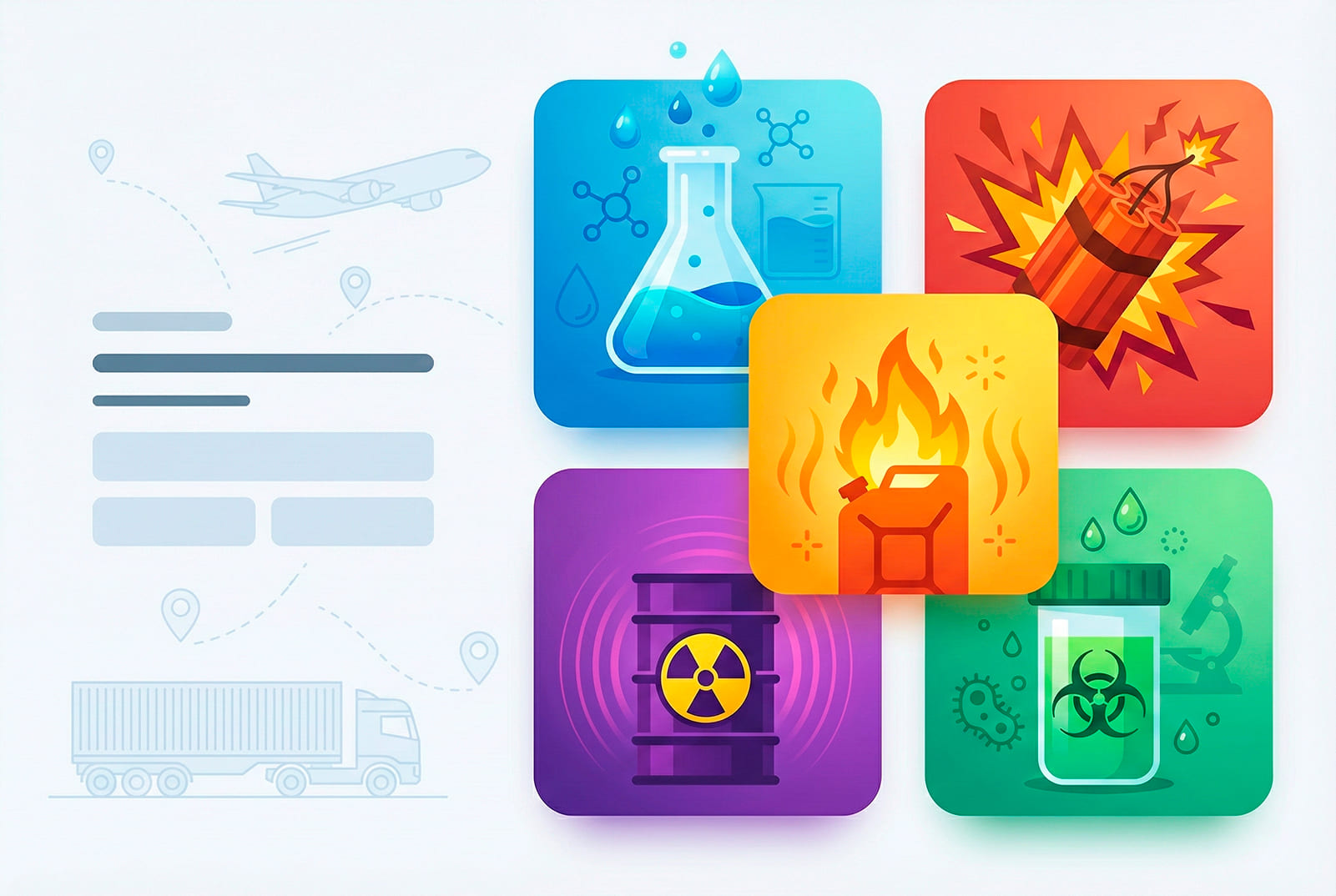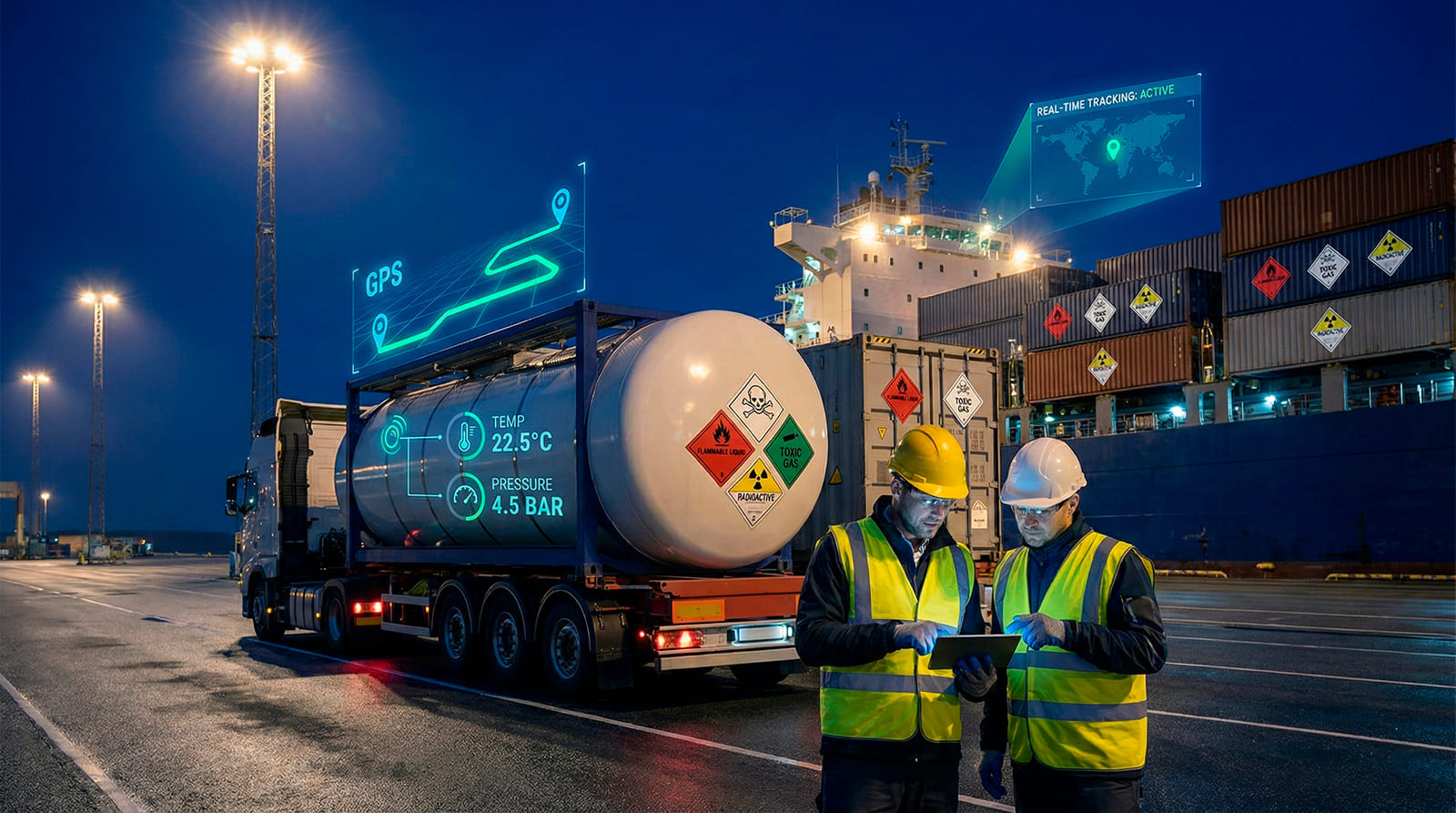In the logistics sector, the transportation of dangerous goods has always been one of the most critical topics. These goods are important not only for the economy but also require strict safety measures to protect human life and the environment. International transport platforms and logistics companies are looking for efficient and safe solutions for the transportation of such cargo. Every year, thousands of tons of dangerous goods are transported worldwide, making a significant contribution to global trade. According to the European Union, in 2022, 8.7% of all transported cargo was classified as dangerous.
Types of Dangerous Goods

Dangerous goods are primarily divided into the following categories:
- Chemical substances – such as acids and solvents.
- Explosives – such as ammunition and pyrotechnic products.
- Flammable substances – such as fuel and gas cylinders.
- Radioactive materials – such as nuclear fuel and medical isotopes.
- Toxic and biologically hazardous materials – such as laboratory samples.
According to the International Air Transport Association (IATA), in 2023, 52% of dangerous goods were transported by air.
Explosives, such as dynamite used in industry, often require special permits. Transport vehicles must be equipped with protection systems to move such cargo.
Flammable liquids, such as gasoline and diesel fuel, are primarily transported by oil companies using passenger and air transport. According to the International Energy Agency, more than 100,000 flights per day carry flammable liquids.
Safety Requirements
-
Compliance with International Standards
The transportation of dangerous goods must comply with international laws and regulations. The IMO (International Maritime Organization) and ADR (European Agreement concerning the International Carriage of Dangerous Goods by Road) form the core of the legal framework.
According to ADR statistics for 2021, the number of accidents involving the road transport of dangerous goods decreased by 15% thanks to new safety protocols.
-
Special Packaging and Labeling
Before transportation, cargo must be specially packed and labeled with the appropriate hazard symbols. This is particularly important to prevent incidents during transit.
For example, according to the U.S. Transportation Security Administration (TSA), 12% of improperly packaged cargo poses a safety risk.
-
Automated Processes
Digital technologies play an important role in improving safety during the transportation of dangerous goods. Software solutions make it possible to automate documentation management and track cargo movements.
The Role of Logistics Platforms
Logistics platforms help streamline the complex processes involved in transporting dangerous goods:
- Document Automation: Managing cargo documentation and permits in digital format.
- Route Optimization: Selecting the safest and shortest routes based on cargo characteristics.
- Monitoring and Reporting: Tracking cargo movements and condition in real time.
According to a 2022 DHL report, the use of digital technologies in the transportation of dangerous goods reduced transit time by 25%.
Technologies Used in the Transportation of Dangerous Goods
-
IoT Devices
IoT technologies make it possible to track cargo movements and control environmental conditions such as temperature and pressure.
-
GPS Monitoring Systems
GPS systems are used to track vehicle routes and bypass high-risk areas. Solutions such as Fleetmatics significantly simplify fleet management.
-
Sensor Technologies
Sensors provide information about cargo condition and levels of hazardous substances. For example, carbon dioxide sensors allow gas leaks to be detected in advance.
Practical Recommendations
-
Engaging Qualified Personnel
The transportation of dangerous goods requires employees who have undergone specialized training. According to UN safety guidelines, risks associated with dangerous goods are reduced by 40% when trained personnel are involved.
-
Using Technology Solutions
The use of IoT devices and GPS technologies helps ensure effective tracking of cargo movements.
-
Testing Before Transportation
Cargo should undergo specific tests before being loaded onto transport vehicles.
According to Shell, in 2021, 98% of dangerous materials that passed testing helped reduce the likelihood of accidents by 90%.
Conclusion
The transportation of dangerous goods is one of the most important segments of the transport and logistics industry. This process requires compliance with international standards, the use of advanced technologies, and the involvement of qualified specialists. In addition, automating dangerous-goods transportation systems improves safety and reduces operating costs. Platforms such as Allcargo.Market offer innovative solutions that significantly simplify the transportation of dangerous goods for business owners and logistics companies. For more information, visit our platform and find a reliable partner for the transportation of your dangerous goods!

 English
English
 Русский
Русский Español
Español

